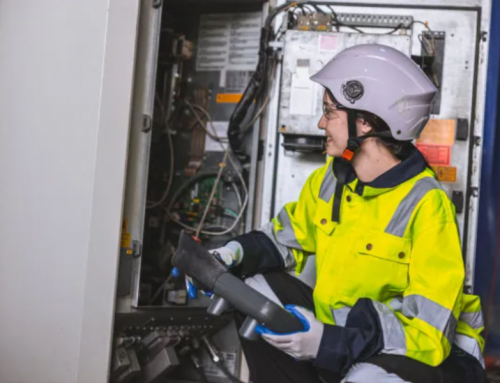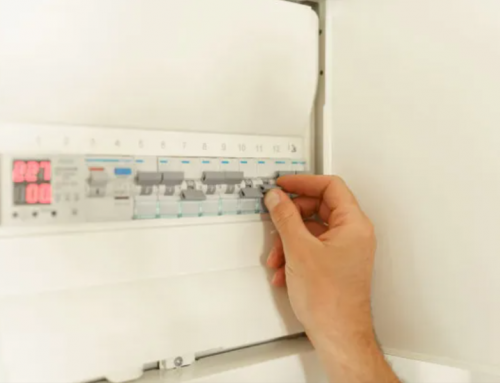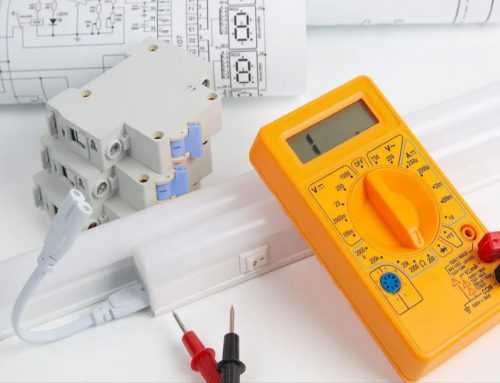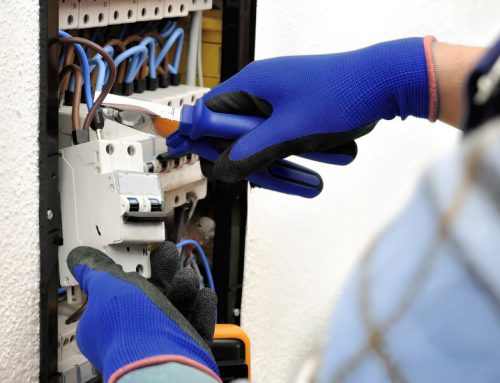What is the difference between relay and circuit breaker?
1.Introduction.
This article will introduce the concepts and definitions of circuit breakers and relays, and explore the differences between them. At the same time, we will discuss how to choose suitable relays and circuit breakers, and analyze them based on practical cases to help readers better understand and apply them.
2. Circuit breaker.
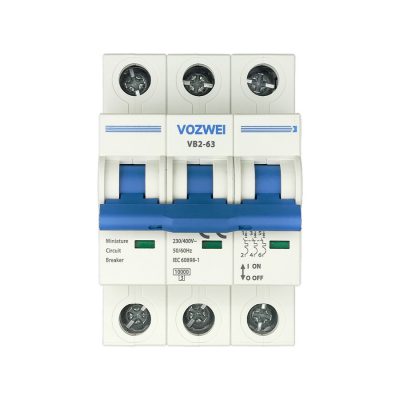
A circuit breaker is a power control device used to protect the safety of circuits and equipment. It has the function of automatically disconnecting the current, and can quickly cut off the circuit in case of current overload, short circuit, or ground fault, to prevent equipment damage or threat to personal safety.
A circuit breaker consists of two parts: a triggering mechanism and a switching mechanism. The triggering mechanism is responsible for detecting current anomalies and generating triggering signals, while the switching mechanism is responsible for achieving power outage operations.
Under normal circumstances, the circuit breaker is in a closed state, and current enters the equipment terminal from the incoming side to complete the circuit power supply. However, when an abnormal situation occurs in the circuit, the circuit breaker will activate the triggering mechanism for protection action.
Firstly, when the current exceeds the rated value of the circuit breaker, the triggering mechanism will sense an overload of the current. Overload protection is one of the main functions of circuit breakers. The triggering mechanism will generate a triggering signal, causing the switch mechanism to quickly cut off the circuit. In this way, current cannot pass through the circuit breaker, avoiding further damage to the circuit and equipment.
Secondly, when a short circuit fault occurs in the circuit, that is, when the circuit is grounded or two conductors are directly connected, the triggering mechanism will also sense the abnormal current. Short circuit protection is another important function of circuit breakers. The triggering mechanism will generate a triggering signal again, causing the switch mechanism to quickly cut off the circuit, preventing the current from continuing to flow through the short-circuit point, thereby avoiding the risk of fire and equipment damage.
In addition to overload and short circuit protection, circuit breakers can also provide ground fault protection. When there is a leakage phenomenon in the circuit, that is, the current flows over the equipment insulation and into the ground, the triggering mechanism will also sense this abnormality. The triggering mechanism will generate a triggering signal again, causing the switch mechanism to cut off the circuit, preventing current from passing through the human body or other paths that may cause harm, in order to ensure personal safety.
In addition, circuit breakers usually have the function of manual operation. Operators can manually operate the circuit breaker to cut off the circuit for maintenance, repair, or other situations that require cutting off the power supply. When manually operated, the switch mechanism will quickly disconnect the circuit and cut off the current supply.
In short, circuit breakers are a very important power control device that can automatically cut off the circuit in the event of current overload, short circuit, and ground fault, protecting electrical equipment and personal safety. It not only has automatic protection function, but also has the convenience of manual operation, and is widely used in various power systems and equipment.
3. Relay.
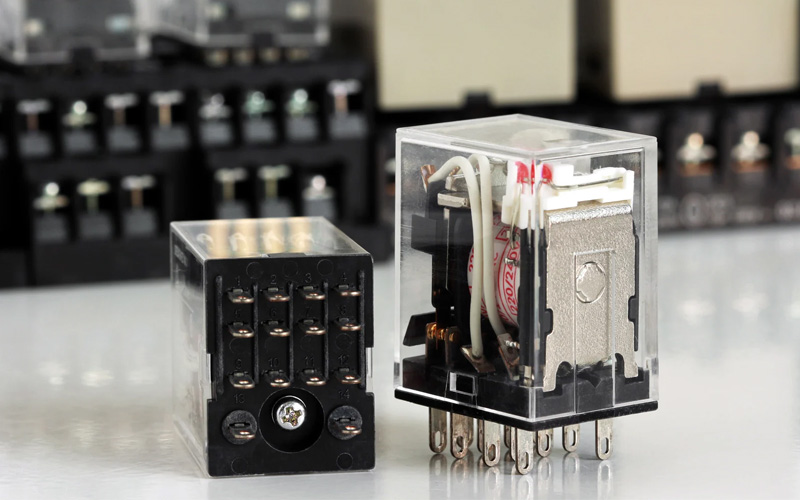
A relay is an electrical control device used to control the switching of another circuit through auxiliary circuit switching operations in one circuit. It is a device that can amplify, convert, and distribute electrical signals, commonly found in various automation systems, power systems, and electronic devices.
The relay mainly consists of an electromagnet, contacts, and a casing. Electromagnets are the core components of relays, consisting of an iron core, a coil, and contacts fixed to the iron core. When the coil of a relay is energized, a magnetic field is generated, which forces the iron core and causes contact action. The contact is responsible for connecting or disconnecting the circuit during operation.
The working principle of relays is based on electromagnetic induction. When the coil is energized, the current forms a magnetic field in the coil, which makes the iron core magnetic. When the current intensity of the coil is large enough, the iron core will be magnetized, and the contacts will close due to the magnetic force; When the coil current stops or decreases to a certain extent, the iron core loses magnetism and the contacts open due to the rebound force. Through this method, relays can achieve control over various circuits.
Relays have many characteristics and advantages. Firstly, a relay is an electrical isolation device that effectively isolates the control circuit from the controlled circuit to improve circuit safety and reliability. Secondly, relays have strong current and voltage capacities, enabling control of high-power circuits. In addition, relays have extremely high response speed and reliability, which can complete actions in a short period of time and maintain the action state for a long time.
The application of relays is extensive and diverse. In the field of industrial automation, relays are often used to control equipment such as motors, solenoid valves, and electric furnaces, achieving automated control of production lines. In the power system, relays can be used to protect and control various electrical equipment, such as generators, transformers, circuit breakers, etc. In addition, relays are widely used in fields such as traffic signal control, household appliances, and communication equipment.
With the development of technology, many derivative varieties of relays have emerged for different application scenarios. For example, solid-state relays replace traditional electromagnetic contacts with semiconductor components to achieve faster and more reliable circuit control. The time relay can automatically switch the circuit status after the preset time has arrived. Program controlled relays perform complex logic operations and timing functions through built-in logic control units.
In short, relays, as an important electrical control device, have a wide range of applications and important functions. It achieves signal conversion and circuit control through the principle of electromagnetic induction, improving the performance and reliability of the circuit. With the continuous progress of technology, relays are also constantly innovating and developing, providing solutions for electrical control problems in various fields.
4.The difference between circuit breakers and relays.
Relays and circuit breakers are two common power control devices, which have some obvious differences in functionality and application.
Firstly, a relay is an electromagnetic switching device that controls the switching action of a high current circuit through the input of external electrical signals. There is an electromagnetic coil and a set of contacts in the relay. When the electromagnetic coil is excited, the contacts will open and close to achieve control of the circuit. Relays are typically used in low-power circuits and signal transmission to achieve signal amplification, conversion, delay, and other functions.
In contrast, a circuit breaker is a power control device used to protect the safety of circuits and equipment. It has the function of automatically disconnecting the current, and can quickly cut off the circuit in case of current overload, short circuit, or ground fault, to prevent equipment damage or threat to personal safety. Circuit breakers are commonly used in high-power circuits and power systems, capable of withstanding large currents and voltages.
Secondly, the main function of relays is to convert and control signals between different circuits. Relays can convert weak control signals into larger current or voltage outputs, thereby driving other devices or circuits to work. The output of a relay is usually a switch signal that can achieve the opening, closing, connection, and disconnection of the circuit.
The main function of circuit breakers is to protect the safety of circuits and equipment. It can automatically detect the magnitude of current and abnormal situations. Once current overload, short circuit, or ground fault is detected, the circuit will be quickly cut off to prevent electrical equipment from being damaged or at risk of fire. The circuit breaker has automatic protection function, which can ensure the reliability and safety of the circuit.
In addition, there are also differences in the triggering mechanism between relays and circuit breakers. The triggering mechanism of a relay is usually an electromagnetic coil, which generates a magnetic field through electromagnetic induction to attract or release contacts, achieving opening and closing operations. The triggering mechanism of circuit breakers is usually composed of overload, short circuit protection components, electronic triggers, etc. It can sense abnormal current and generate corresponding triggering signals, causing the switch mechanism to quickly cut off the circuit.
Finally, there are also differences in the application range between relays and circuit breakers. Relays are widely used in low-power circuits such as automatic control systems, communication systems, instruments and meters, and are commonly used in elevator control, broadcasting systems, computer equipment, etc. Circuit breakers are mainly used in power systems, industrial equipment, buildings, and other occasions that require high power and current, such as power supply boxes, power stations, manufacturing industries, etc.
In summary, there are significant differences in principle, function, and application between relays and circuit breakers. Relays are mainly used for signal transmission and control, converting low-power signals into high-power outputs, while circuit breakers are mainly used for circuit protection to cut off the circuit in the event of current overload, short circuit, or ground fault, protecting equipment and personal safety. The two play an important role in the field of power systems and automatic control, complementing each other and jointly building safe and reliable circuits and control systems.
5.How to select relays and circuit breakers.
a.Selection of relays
A relay is a switching device that controls a larger current by controlling a smaller current, typically consisting of coils, contacts, and shrapnel. The following factors need to be considered when selecting relays:
(1). Load type: The load type of a relay is usually low-power electrical equipment, such as bulbs, solenoid valves, etc. For high-power loads such as motors, it is necessary to choose a more suitable electronic control device.
(2). Control method: The relay can be controlled manually or automatically. Manual control usually uses buttons or switches, while automatic control can be achieved through controllers (PLC, microcontroller, etc.).
(3). Application scenarios: Relays can be applied to various scenarios such as remote control, timing control, flow control, etc., such as home lighting systems, aircraft and automotive control systems, industrial automation, and other fields.
(4). Safety requirements: For low-power loads such as light bulbs, the safety requirements are relatively low. For high-power loads, it is necessary to consider whether their protective measures are sufficient.
(5). Cost effectiveness: Relays are usually cheaper and suitable for small and medium-sized application scenarios. But in situations where high reliability is required, it is necessary to choose products with better brands and models.
b. Selection of circuit breakers
A circuit breaker is a switching device used to cut off or protect circuits, which can provide overload protection, short circuit protection, and leakage protection for electrical circuits. The following factors need to be considered when selecting circuit breakers:
(1). Load type: Circuit breakers can be used for low, medium, and high power electrical equipment, such as bulbs, motors, etc.
(2). Current capacity: The current capacity of the circuit breaker should match the rated current of the load appliance to ensure circuit stability and safety.
(3). Application scenario: Circuit breakers can be used in fields such as home electrical, industrial production lines, and power equipment, especially in situations with high safety requirements and large load electrical appliances.
(4). Functional requirements: Circuit breakers selected for different occasions need to meet different functional requirements, such as leakage protection, overload protection, short circuit protection, isolation switches, etc.
(5). Environmental adaptability: Circuit breakers usually need to adapt to complex and harsh environments, such as high temperature, high humidity, dust, etc.
(6). Cost effectiveness: Although circuit breakers have relatively high costs, their reliability and safety make them more cost-effective for larger scale and high safety requirements.
In summary, selecting a relay or circuit breaker requires comprehensive consideration based on factors such as load type, application scenario, safety requirements, functional requirements, and cost-effectiveness. When making specific choices, it is necessary to combine the actual needs and characteristics of different fields to make judgments and decisions.
6. Case Study.
When choosing whether to use relays or circuit breakers, the following factors are mainly considered: load type, application scenario, safety requirements, and cost-effectiveness. Below are two specific examples to illustrate how to make a selection.
Example 1: Home lighting control system
Assuming there is a home lighting control system that requires remote control of lighting in different rooms. In this case, using a relay is a common choice.
Load type: Bulbs are usually low-power appliances and are suitable for control using relays.
Application scenario: Home lighting systems require remote control, and relays can remotely switch on and off lights by receiving wireless or network signals.
Safety requirements: For low-power loads such as light bulbs, the safety requirements are relatively low, so relays can meet the requirements.
Cost effectiveness: Relays are usually cheaper and suitable for small-scale applications such as home lighting systems.
In summary, using relays is a reasonable choice for home lighting control systems, as it can achieve remote control and is cost-effective.
Example 2: Electrical protection system for industrial production lines
Suppose there is an industrial production line that needs to protect equipment and circuits, and timely cut off the circuit in case of current overload, short circuit, and other faults. In this case, using a circuit breaker is a more common choice.
Load type: Industrial equipment usually has high power and can withstand larger current loads using circuit breakers.
Application scenario: Industrial production environments often have complex and harsh conditions, and circuit breakers can adapt to high temperature, high humidity, dust and other environments and provide reliable electrical protection.
Safety requirements: In industrial production lines, safety requirements are high and it is necessary to protect the safety of equipment and personnel. The circuit breaker has functions such as overload protection, short circuit protection, and leakage protection, which can cut off the circuit in a timely manner to avoid danger.
Cost effectiveness: Although the cost of circuit breakers is relatively high, for industrial production lines with larger scale and high safety requirements, the reliability and safety of circuit breakers make them more cost-effective.
In summary, using circuit breakers is a more reasonable choice in the electrical protection system of industrial production lines, as it can provide multiple protection functions and adapt to complex industrial environments.
Conclusion
In summary, this article provides a detailed introduction to the definitions, functions, and selection elements of relays and circuit breakers. Relays are suitable for low-power loads and can be used to control switching devices with large currents. They are commonly used in scenarios such as remote control and timing control; Circuit breakers are used to cut off or protect circuits, providing overload protection, short circuit protection, and leakage protection, suitable for various power loads. When choosing, it is necessary to consider multiple factors such as load type, control method, application scenario, security requirements, and cost-effectiveness. Only after comprehensive analysis can relays or circuit breakers be correctly selected and used to ensure the stable operation and safety of electrical equipment. I hope readers can have a more comprehensive understanding of relays and circuit breakers through the introduction of this article, and make accurate choices and decisions in electrical design and maintenance.
References
Appendix
Circuit: The complete closed path through which a current can pass.
